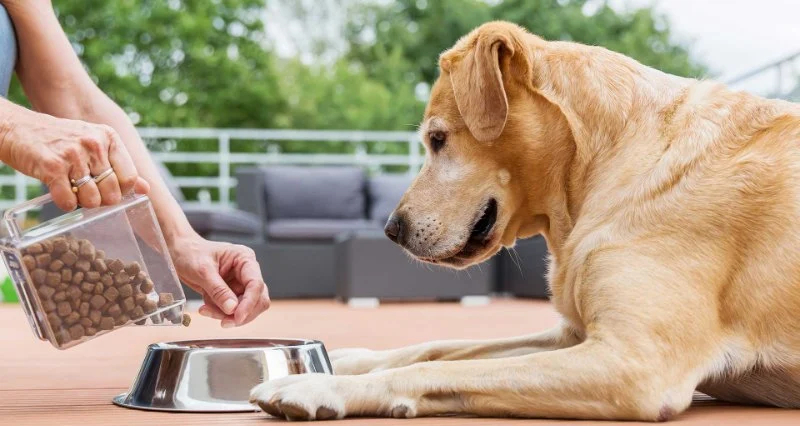
How Often Should You Change Your Pet’s Diet? A Vet’s View
- 1 - Understanding Your Pet's Diet Needs
- 2 - Signs That Indicate It's Time to Change Your Pet's Diet
- 3 - How Often Should You Change Your Pet’s Diet?
- 4 - Case Study: Changing a Pet’s Diet for Better Health
1 - Understanding Your Pet's Diet Needs
A pet's diet plays a critical role in their overall health and well-being. Just like humans, pets require a balanced diet that supports their age, breed, activity level, and specific health conditions. However, knowing when and how to adjust their diet can be tricky. Here’s why understanding their nutritional needs is so important:
1.1 Age and Life Stage
As your pet grows, their nutritional needs change. Puppies and kittens need different diets compared to adult pets. Senior pets may require food that supports joint health and has fewer calories. It’s essential to choose the right food for your pet’s age to maintain optimal health.
1.2 Breed-Specific Requirements
Different breeds of dogs and cats have different dietary needs. For example, larger dog breeds may need a food designed to support bone health, while smaller breeds may require higher levels of protein to maintain muscle mass. Understanding these requirements helps ensure your pet gets the most out of their food.
1.3 Health Conditions
If your pet suffers from a medical condition, such as obesity, allergies, or kidney disease, their diet might need to be adjusted accordingly. A vet can help determine the best food for their health and manage any conditions through diet.
2 - Signs That Indicate It's Time to Change Your Pet's Diet
It’s not always easy to tell when your pet's diet needs to be changed. Here are some signs that may indicate it’s time to reassess their food:
2.1 Changes in Weight
Sudden weight loss or gain can be a sign that your pet’s current food isn’t providing the right balance of nutrients. If your pet is consistently gaining or losing weight despite maintaining the same activity levels, it may be time to change their food to something better suited to their needs.
2.2 Digestive Issues
If your pet is experiencing frequent vomiting, diarrhea, or constipation, it could be a sign that their food isn’t agreeing with them. Switching to a different food might help alleviate these issues, especially if your pet has food sensitivities or allergies.
2.3 Lack of Energy or Sudden Lethargy
Pets that seem lethargic or less energetic than usual might not be getting the nutrients they need. A change in diet could help improve their energy levels and overall well-being.
2.4 Skin and Coat Problems
Dry, flaky skin, excessive shedding, or a dull coat are signs that your pet may not be receiving the right balance of fats and proteins in their diet. A change in food that includes higher-quality ingredients could lead to improvements in their coat and skin health.
3 - How Often Should You Change Your Pet’s Diet?
While it’s crucial to monitor your pet’s health and diet continuously, there isn’t a specific timeline for when you should change their food. However, here are a few general guidelines:
3.1 Every Major Life Stage
As mentioned, a pet's dietary needs evolve as they age. Changing your pet’s diet at each major life stage—puppy/kitten, adult, and senior—ensures that they are getting the proper nutrients to maintain good health. You may also need to change their food if their activity level or weight changes significantly.
3.2 Based on Health Changes
If your pet develops health issues like allergies or arthritis, it may be necessary to change their diet to support these changes. Your veterinarian can recommend foods that are formulated for specific health concerns and guide you through the transition.
3.3 Gradual Transitions
Whenever you decide to change your pet’s food, it’s important to do so gradually. Sudden changes in diet can upset your pet’s stomach and cause digestive issues. Mix the new food with their current food over the course of 7–10 days, gradually increasing the new food ratio each day.
4 - Case Study: Changing a Pet’s Diet for Better Health
Let’s look at the case of Daisy, a 6-year-old Golden Retriever who had been eating the same food for years. Daisy started to gain weight and seemed less active than usual. Her owner, Tom, took her to the vet, who advised switching her to a weight management formula to help with the weight gain.
4.1 Identifying the Problem
Upon examining Daisy, the vet found that she had gained 10 pounds over the past year, which could put a strain on her joints and overall health. Daisy’s energy levels had decreased, and she wasn’t playing as much as she used to. The vet recommended changing her diet to a food formulated for weight management and joint health.
4.2 Transitioning to a New Diet
Tom gradually transitioned Daisy to her new food by mixing the old and new food together. Over the next few weeks, Daisy’s energy levels began to rise, and she started playing again. After three months, Daisy had lost 5 pounds and her overall health had improved.
4.3 The Result
With the new diet, Daisy was much healthier, and Tom felt confident that he was giving her the best care possible. This case demonstrates the importance of adjusting your pet’s diet as needed to keep them healthy and active throughout their lives.
If you're considering changing your pet’s diet, visit Pet & Puppy to find the best selection of pet foods tailored to your pet’s specific needs, from weight management to health support.









 Princeton Veterinary Hospital4.0 (821 reviews)
Princeton Veterinary Hospital4.0 (821 reviews) Thomas Ridge Kennels4.0 (17 reviews)
Thomas Ridge Kennels4.0 (17 reviews) All Creatures Animal Hospital4.0 (354 reviews)
All Creatures Animal Hospital4.0 (354 reviews) Fatty Paws Pet Boutique0.0 (0 reviews)
Fatty Paws Pet Boutique0.0 (0 reviews) CityVet | Lone Mountain Veterinary & Urgent Care4.0 (104 reviews)
CityVet | Lone Mountain Veterinary & Urgent Care4.0 (104 reviews) Petnificent Picks5.0 (1 reviews)
Petnificent Picks5.0 (1 reviews) How to Transition a Senior Pet to Easier-to-Eat Food: A Comprehensive Guide
How to Transition a Senior Pet to Easier-to-Eat Food: A Comprehensive Guide The Hidden Dangers in Common Pet Supplies: What You Need to Know
The Hidden Dangers in Common Pet Supplies: What You Need to Know Managing Chronic Conditions in Pets: Essential Diet, Medication & Lifestyle Tips
Managing Chronic Conditions in Pets: Essential Diet, Medication & Lifestyle Tips How to Build a Pet Emergency Kit: Essentials You Need
How to Build a Pet Emergency Kit: Essentials You Need Best Practices for Pet Grooming Frequency by Breed: Keeping Your Pet’s Coat Healthy
Best Practices for Pet Grooming Frequency by Breed: Keeping Your Pet’s Coat Healthy The Effect of Seasonal Allergies on Pets & How to Help
The Effect of Seasonal Allergies on Pets & How to Help